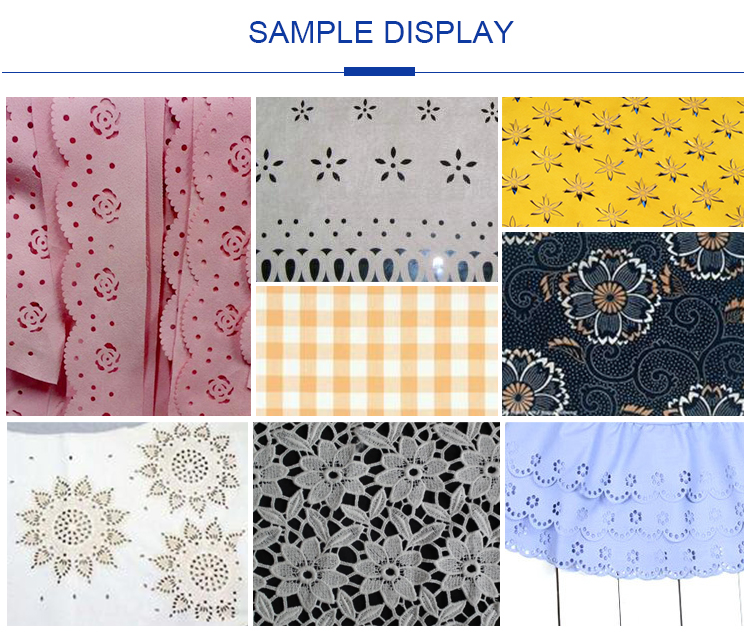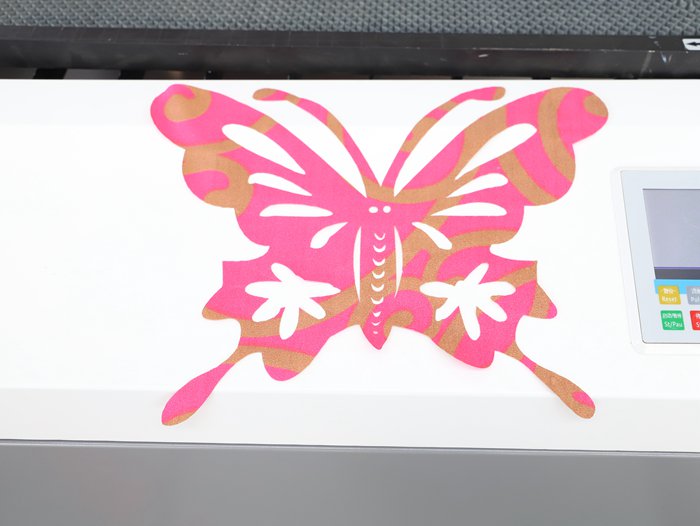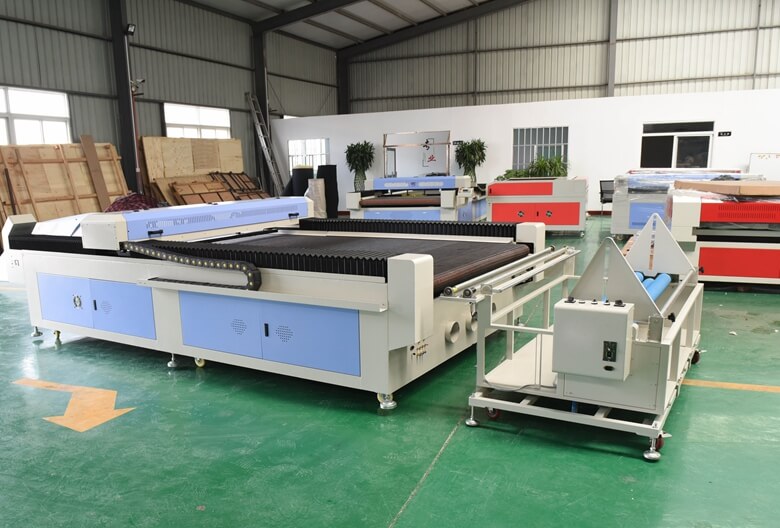Laser Knowledge
Laser Textile Cutting: Precision and Innovation in Fabric Processing
Whether you’re in fashion design, automotive interiors, sportswear, or technical textiles, laser cutting offers unmatched precision, clean edges, and the ability to handle intricate patterns with ease.

Laser Textile Cutting
Laser textile cutting machine is a non-contact process that uses a highly focused laser beam to cut through various types of fabric. The laser beam vaporizes or melts the material along a predefined path, resulting in clean, sealed edges without fraying or distortion. Unlike traditional cutting methods—such as rotary blades, scissors, or die-cutting—laser cutting offers unparalleled precision, speed, and automation.

How Does Laser Cutting Work on Textiles?
Preparation: Choose suitable, clean, and wrinkle-free fabric. Place roll fabrics on the auto-feeder.
Setting Up: Select appropriate laser power, speed, and frequency based on the fabric type and thickness. Ensure the built-in software is ready for precise control.
Fabric Cutting: The auto-feeder transports the fabric to the conveyor table. The laser head, controlled by the software, follows the cutting file to cut the fabric accurately.
Post-processing: Inspect and finish the cut fabric to ensure quality, addressing any necessary trimming or sealing of edges.

Key Benefits
▶ Clean & Precise Cuts
Laser cutting produces clean, exact cuts with minimal heat-affected zone and no fraying, thanks to the laser heat sealing synthetic fabric edges.
▶ Reduced Waste & Cost-Effective
By precisely cutting complex shapes, material waste is minimized, making it suitable for producing complex designs at lower costs.
▶ High Speed & Efficiency
The process is fast, enabling quick textile production, and some machines support automatic continuous cutting for increased efficiency.
▶Versatility & Precision
Laser cutting can cut, engrave, and create intricate designs on various fabrics without causing damage, meeting the unique design needs of designers and manufacturers.
▶ No Physical Contact & Customization
The contactless process avoids fabric distortion and tool wear, ensuring consistent quality, and laser tables and systems can be customized to fit various material sizes and types.
Common Applications of Laser Textile Cutting
Fashion and Apparel – Dresses, lace, embroidery backings, appliqués。
Sportswear – Precision-cut panels, logos, ventilation holes。
Automotive Interiors – Seat covers, headliners, insulation materials。
Furniture and Upholstery – Cushions, covers, foam layers。
Medical Textiles – Surgical gowns, masks, bandages。
Technical Textiles – Kevlar, carbon fiber, filtration fabrics。
Custom Design and Branding – Logos, decorative patterns, laser-etched graphics。

General Tips for Laser Textile Cutting
1. Material Compatibility: Ensure the fabric suits laser cutting.
2. Laser Power: Match the power to the fabric’s thickness and type.
3. Machine Size: Choose a machine with a suitable working area for the fabric size.
4. Speed and Power Testing: Test low power and high speed settings on spare fabric to find optimal parameters.
5. Proper Exhaust: Ensure adequate ventilation to remove smoke and particles, optimizing cutting conditions.
Laser Textile Cutting FAQs
1. Can you laser cut textile?
Yes.You can laser cut a variety of textiles, including natural and synthetic materials, with a laser cutter, and the heat of the laser can even seal the edges of some fabrics, preventing fraying. A wide variety of textiles are suitable for laser cutting such as cotton, silk, velvet, nylon, polyester or cordura.
2. How does laser cutting fabric work?
The fabric laser cutting process involves directing a concentrated laser beam onto the fabric, which heats and vaporizes the material along the desired cutting path. The laser cutting machine uses a controlled motion system to move the laser head, ensuring accuracy and consistency.
3. Which materials are not suitable for laser cutting and engraving?
Leather and artificial leather that contains chromium (VI),Carbon fibers (Carbon),Polyvinyl chloride (PVC),Polyvinyl butyrale (PVB),Polytetrafluoroethylenes (PTFE /Teflon),Beryllium oxide.
4.How are lasers used in textiles?
Most textile cutting tends to be done with a CO2 laser, a gas laser that creates infrared light. This is a different laser than those used to cut hard materials like wood or metal. A machine guides the laser, which then cuts pieces of fabric by melting or vaporizing it along lines corresponding to the design.
5. How does machine ensure the accuracy of cutting?
A CCD camera is installed beside the laser head to locate the workpiece via registration marks at the cutting start. Thus, the laser can visually scan printed, woven, and embroidered fiducial marks, along with other high-contrast contours, to identify the exact position and size of the fabric workpieces for precise cutting.
Conclusion
Laser cutting textile is a precise and efficient method for crafting various products and designs. It uses a focused laser beam guided by computer controls to cut through textile materials, resulting in clean cuts. This technique is widely used in accessories, apparel, home goods, medical textiles, home decor, and specialty fabrics. The advantages of laser textile cutting include clean and precise cuts, no fraying, high speed, reduced waste, versatility, precision, efficiency, cost-effectiveness, customization, and no physical contact. When laser cutting textiles, consider material compatibility, laser power, machine size, speed and power testing, and proper exhaust.
The process involves preparation, setting up, fabric cutting, and post-processing. FAQs about laser cutting textiles include questions about suitable materials, the laser cutting process, materials not suitable for laser cutting, and how machines ensure cutting accuracy.

IGOLDEN BLOG
Thank you for visiting the iGOLDENCNC website. iGOLDENCNC is the professional supplier of CNC machinery application solution, within the business of producing and selling CNC machinery and accessories.